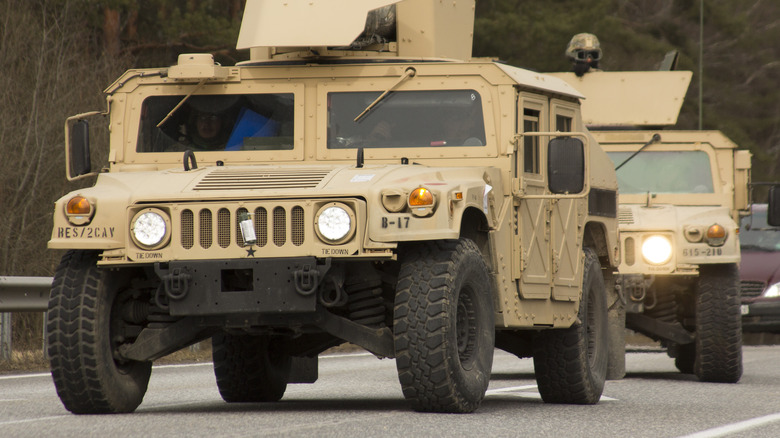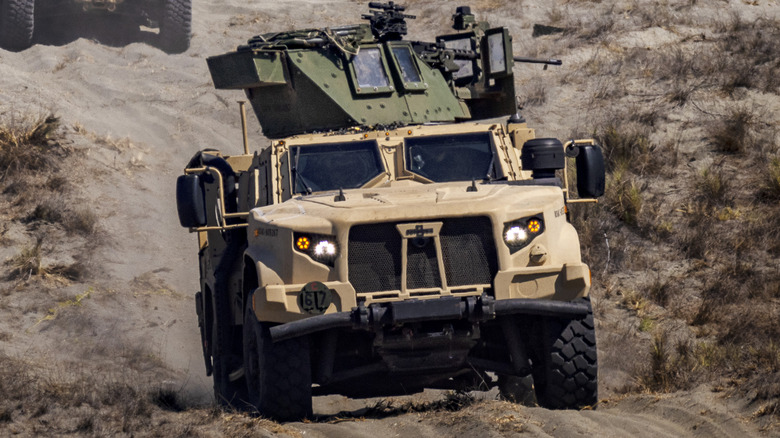The U.S. military has utilized many different vehicles throughout the years. Tanks, aircraft, and others have taken on various military operations. But one stands head and shoulders above the rest as far as recognizability: the Jeep. Starting its tenure during World War I, this was one of the many vehicles the U.S. Army used extensively, with World War II in particular allowing Jeep to become the empire we know today. In time, it became and remains synonymous with the U.S. military, even though it was phased out of such use over 40 years ago.
Advertisement
If the Jeep was so effective that it became a flagship vehicle of the U.S. Army, why isn’t it still used by the Armed Forces today? Simply put, it wasn’t able to keep up with demands of the rapidly-evolving military. By the late-20th century, weapons had become heavier, and the ability to carry more people per vehicle was very much needed. The Jeep couldn’t meet these demands. According to the New York Times, back in March 1983, the Jeep was replaced by “a larger vehicle designed to keep pace with today’s modern military.” The vehicle turned out to be the High-Mobility Multipurpose Wheeled Vehicle, or Humvee, as it became colloquially known, which delivered where the Jeep fell short.
The Humvee led to the end of the Jeep’s decades-long military service, and now, it too is slowly being outmoded.
Advertisement
The rise and decline of the Humvee
The Humvee has become an iconic military vehicle in its own right. In fact, some would go as far as to say it has surpassed the Jeep as the most legendary military truck of all time. Not to mention, it led to the rise of a four-wheeled civilian favorite as well, the Hummer, which first became available for sale to the public in 1992. The ensuing years saw other automotive giants try to compete with it. In the case of another military vehicle-turned-civilian ride, the Toyota Mega Cruiser, which even went toe-to-toe with it.
Advertisement
As far as its service record, the Humvee has traversed numerous battlefields throughout the decades. It burst onto the scene with the 1989 invasion of Panama, later taking prominence during the Gulf War of the 1990s. Naturally, the Humvee remained widely-used by the military during the War on Terror in the 2000s, but by this point, the vehicle began to show signs of obsolescence. It struggled to keep soldiers safe in urban environments, with small arms fire and improvised explosive devices (IEDs) doing a number on them and those within. Fortified doors and windows seemed like a good solution, but the added weight made Humvees slower, less maneuverable, and prone to extensive mechanical issues.
Advertisement
In the wake of these problems, and with lives on the line, the U.S. military had no choice but to seek out an alternative to the Humvee. In time, an effective solution came along.
The slow end of the Humvee and the rise of the JLTV era
Even though Humvees are still in use by the U.S. military, they’re now in a similar position as the Jeep in the early 1980s. They’re no longer allowed outside safe areas in combat zones, and are being overtaken by JLTVs — Joint Light Tactical Vehicles. These were introduced and began replacing Humvees in 2018 within the Army and Marine Corps. As of 2021, JLTVs have replaced 10,000 Humvees. Given their stats, it’s not hard to figure out why.
Advertisement
These more durable, heavier-duty, and better-performing vehicles come from producer Oshkosh, and in its years of military-overseen testing, the JLTV has seen higher mission success rates than those featuring Humvees. They boast mine-resistant hulls, longer suspension travel, and 400 hp turbodiesel engines, making them as fast and powerful as they are protective. As JLTVs see more battlefield use, Humvees are expected to continue serving within the Army and Marines in reduced capacity until 2050, when they will officially go into retirement.









